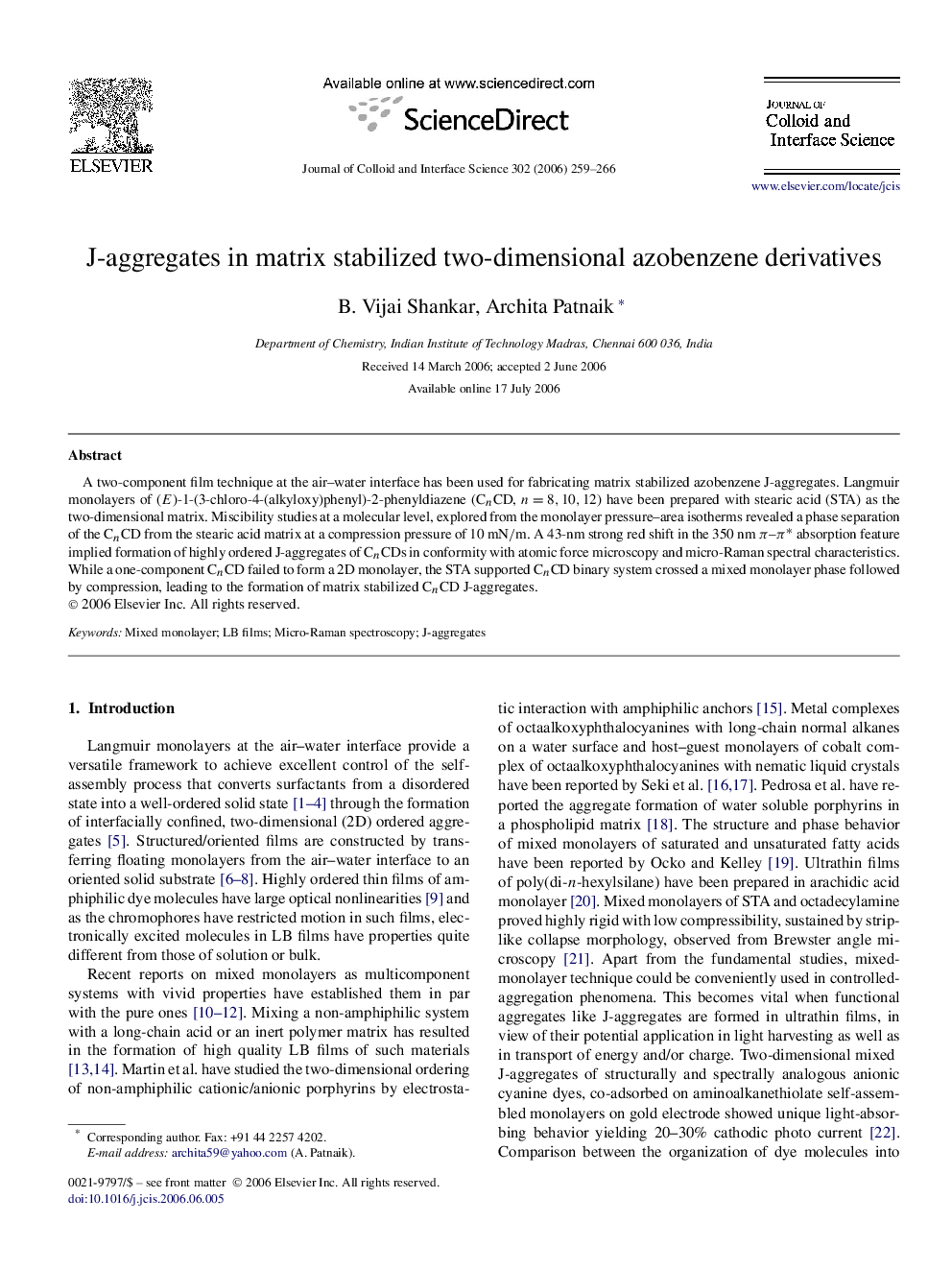| کد مقاله | کد نشریه | سال انتشار | مقاله انگلیسی | نسخه تمام متن |
|---|---|---|---|---|
| 613469 | 880722 | 2006 | 8 صفحه PDF | دانلود رایگان |

A two-component film technique at the air–water interface has been used for fabricating matrix stabilized azobenzene J-aggregates. Langmuir monolayers of (E)-1-(3-chloro-4-(alkyloxy)phenyl)-2-phenyldiazene (CnCD, n=8,10,12n=8,10,12) have been prepared with stearic acid (STA) as the two-dimensional matrix. Miscibility studies at a molecular level, explored from the monolayer pressure–area isotherms revealed a phase separation of the CnCD from the stearic acid matrix at a compression pressure of 10 mN/m. A 43-nm strong red shift in the 350 nm π–π∗π–π∗ absorption feature implied formation of highly ordered J-aggregates of CnCDs in conformity with atomic force microscopy and micro-Raman spectral characteristics. While a one-component CnCD failed to form a 2D monolayer, the STA supported CnCD binary system crossed a mixed monolayer phase followed by compression, leading to the formation of matrix stabilized CnCD J-aggregates.
Figure optionsDownload as PowerPoint slide
Journal: Journal of Colloid and Interface Science - Volume 302, Issue 1, 1 October 2006, Pages 259–266